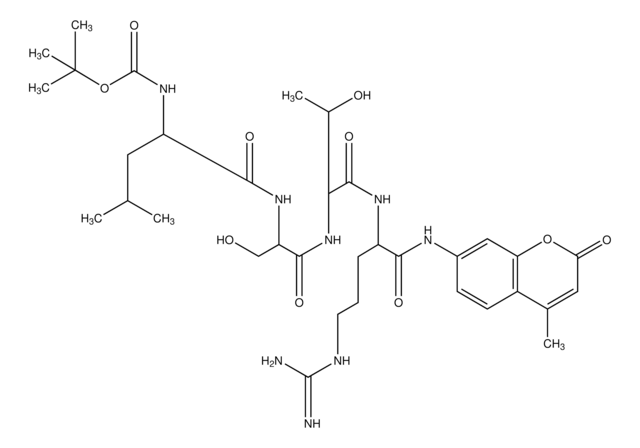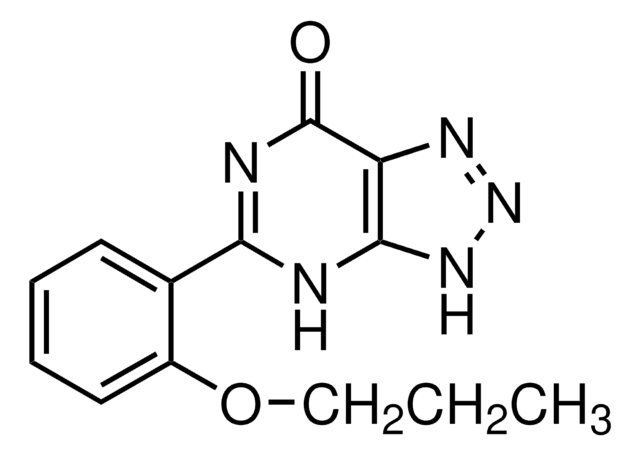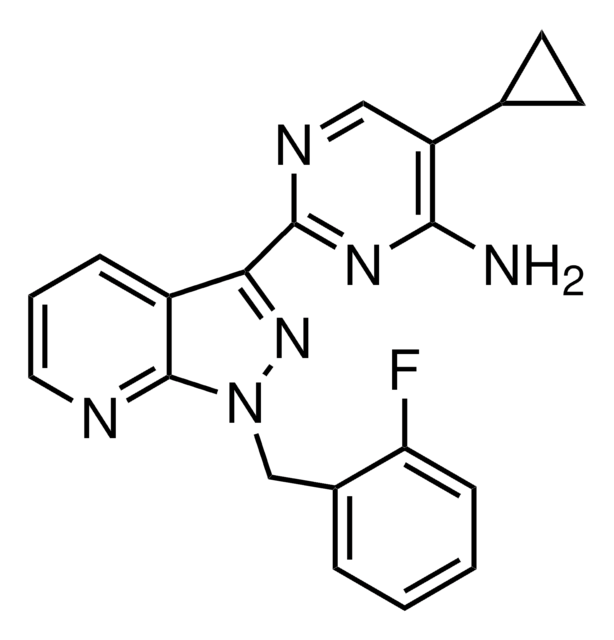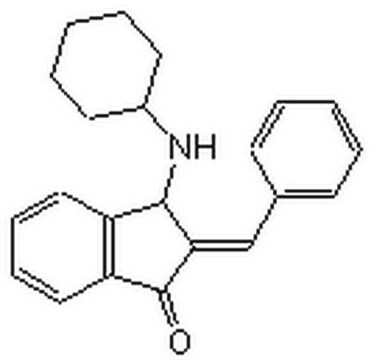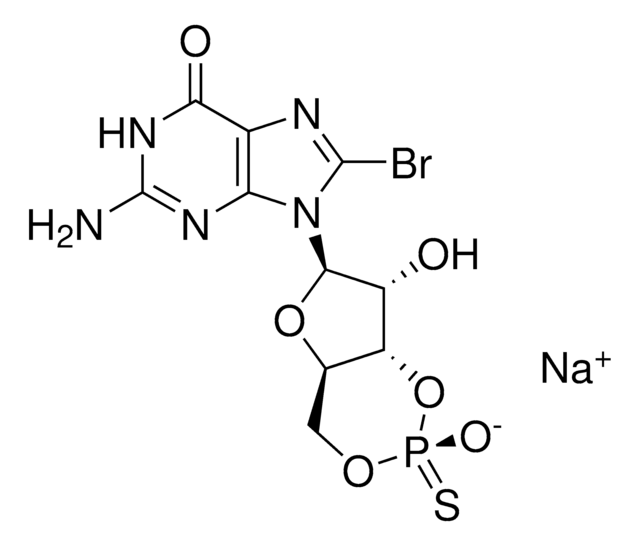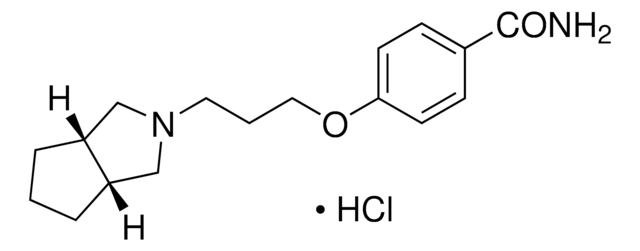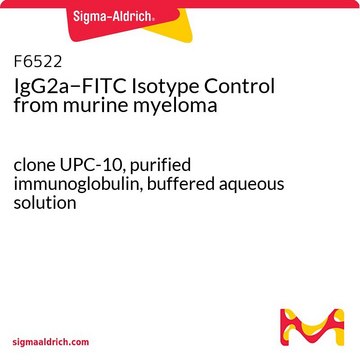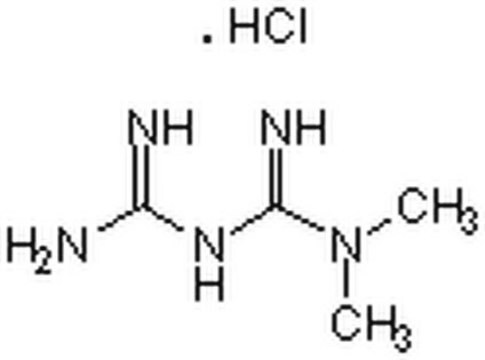SML1817
BCI-121
≥98% (HPLC)
Synonyme(s) :
4-(Aminocarbonyl)-N-(4-bromophenyl)-1-piperidineacetamide, BCI121
Se connecterpour consulter vos tarifs contractuels et ceux de votre entreprise/organisme
About This Item
Formule empirique (notation de Hill):
C14H18BrN3O2
Numéro CAS:
Poids moléculaire :
340.22
Code UNSPSC :
12352200
Nomenclature NACRES :
NA.77
Produits recommandés
Niveau de qualité
Pureté
≥98% (HPLC)
Forme
powder
Couleur
white to beige
Solubilité
DMSO: 20 mg/mL, clear
Température de stockage
2-8°C
Actions biochimiques/physiologiques
BCI-121 is a substrate-competitive SMYD3 inhibitor that reduces nuclear histone H3 lys4 di- and tri-methylation level (by 50%/H3K4me2 and 40%H3K4me3 in HT29 cells; 100 μM BCI-121 for 48 h), downregulates known SMYD3 target genes transcription, and selectively affects SMYD3-dependent proliferation of cancer cultures (46%/HT29 and 54%/HCT116 proliferation reduction; 100 μM BCI-121 for 72 h) with little antiproliferation efficacy toward low SMYD3-expressing cancer cells. BCI-121 targets SMYD3 via direct affinity interaction (kon 357.7/M/s; koff 4.23×10-3/s; KD=koff/kon = 11.8 μM) and effectively competes against histone for SMYD3 binding (%inhibition/[histone H4 peptide]:[BCI-121] ratio = 36.5%/1:1 and 51.0%/1:2.5).
BCI121 is capable of reducing the mesenchymal signature of MDA-MB-231 cells. It can also decrease their ability to invade in vitro and in vivo.
Code de la classe de stockage
11 - Combustible Solids
Classe de danger pour l'eau (WGK)
WGK 3
Certificats d'analyse (COA)
Recherchez un Certificats d'analyse (COA) en saisissant le numéro de lot du produit. Les numéros de lot figurent sur l'étiquette du produit après les mots "Lot" ou "Batch".
Déjà en possession de ce produit ?
Retrouvez la documentation relative aux produits que vous avez récemment achetés dans la Bibliothèque de documents.
Ryuji Hamamoto et al.
Cancer science, 107(4), 377-384 (2016-01-12)
Protein methylation is one of the important post-translational modifications. Although its biological and physiological functions were unknown for a long time, we and others have characterized a number of protein methyltransferases, which have unveiled the critical functions of protein methylation
SMYD3 promotes the epithelial-mesenchymal transition in breast cancer
Fenizia C, et al.
Nucleic Acids Research, 47(3), 1278-1293 (2018)
Tianjiao Lyu et al.
International journal of cancer, 146(6), 1553-1567 (2019-09-11)
Detachment of cancer cells from the primary tumor and formation of spheroids in ascites is required for implantation metastasis in epithelial ovarian cancer (EOC), but the underlying mechanism of this process has not been thoroughly elucidated. To mimic this process
Roberta Codato et al.
Scientific reports, 9(1), 17298-17298 (2019-11-23)
The coordinated expression of myogenic regulatory factors, including MyoD and myogenin, orchestrates the steps of skeletal muscle development, from myoblast proliferation and cell-cycle exit, to myoblast fusion and myotubes maturation. Yet, it remains unclear how key transcription factors and epigenetic
Alessia Peserico et al.
Journal of cellular physiology, 230(10), 2447-2460 (2015-03-03)
SMYD3 is a histone lysine methyltransferase that plays an important role in transcriptional activation as a member of an RNA polymerase complex, and its oncogenic role has been described in different cancer types. We studied the expression and activity of
Notre équipe de scientifiques dispose d'une expérience dans tous les secteurs de la recherche, notamment en sciences de la vie, science des matériaux, synthèse chimique, chromatographie, analyse et dans de nombreux autres domaines..
Contacter notre Service technique
